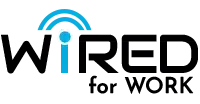OKR: Goal-setting on steroids
Simple goal-setting methology for executing strategy
Effective Goal-setting
“A goal properly set is halfway reached.” – Zig Ziglar
In his #1 New York Times bestseller Measure What Matters – How Google, Bono, and the Gates Foundation Rock the World with OKRs, John Doerr revealed how Objectives and Key Results has helped many companies achieve explosive growth. In his 2018 book, the legendary venture capitalist showcases the unique OKR goal-setting framework, which first originated at Intel. But take note this innovative goal-setting process is not just reserved for tech giants. In fact it can help any organization thrive.
So what is OKR and how does it differ from earlier goal-setting processes?
What is OKR?
OKR stands for Objective and Key Results. Individuals, teams, and companies use this tool for setting goals. Its focus is on strategic objectives, resource alignment, and outcome metrics, and its very public nature ensures transparency when pursuing ambitious goals. The OKR methodology was created by Andy Grove, former CEO of Intel, and advocated by engineer turned venture capitalist, John Doerr. Doerr would go on to use the OKR framework to help funded start-ups at Kleiner Perkins.
Click here for a short video by Andy explaining the OKR process.
Objectives are what you want to achieve. They serve as beacons that signal to everyone the direction in which the business aspires to go. Objectives start with the company’s strategic objectives first, then filter out to teams and individuals who create their own objectives. Both cross-functionally and bottom up, these objectives support the overall strategic objectives. They are memorable and qualitative descriptions that are short, motivating and engaging.
On the other hand, key results describe how you are going to achieve the objectives. They are quantitative. For each objective there are 2-5 key results which are specific, calendar-based, and most important, they are measurable. According to Marissa Mayer, former Google Vice President, “If it does not have a number, it is not a Key Result.”
The OKR Calendar
OKRs have a cadence tied to the business calendar. The high level business objectives come from the annual planning process. Typically, OKRs are set on a quarterly basis and their progress reviewed to determine whether objectives were achieved or must be tweaked in the next quarter.
This quarterly “OKR cycle” is a rule of thumb and can be adjusted depending upon the needs of the business. Smaller businesses or start-ups often operate on a monthly OKR cycle. Teams ensure steady progress on quarterly objectives with weekly check-ins. Focusing on time and measurement allows the progress to be tracked throughout the OKR cycle, creating a common framework for achieving big goals.
What makes OKR better?
sOutcomes not tasks
According to Felipe Castro, OKR trainer, speaker and author, “A major benefit of OKR is moving from project management to outcomes thinking.” There is a critical difference between OKRs and other project management or goal-setting tools. The process measures key results. It doesn’t check off tasks.
Castro always asks in his OKR workshops: “If you deliver all your tasks and nothing improves, are you still successful?” He contends you are not. With OKRs, when you measure what’s important to the organization, you focus on the outcomes you want to achieve. You are not interested in a checklist of tasks or deliverables.
Cadence of Check-ins
For acclaimed author and speaker, Christina Wodtke, “When people ask me the difference between OKRs and SMART* goals or other goal setting approaches, I tell them it is the cadence of check-ins. The cadence makes the difference between goal setting and goal achieving.”
According to Wodtke, the critical part of the process is the constant review and challenges to the OKRs. This is critical for the weekly check-ins and quarterly meetings. She also recommends “baking your OKRs into your weekly team meetings (if you have them) and your weekly status emails.”
But Wodtke warns those getting started with OKRs, “Don’t set OKRs for everything you do. Create an OKR set for the mission-critical thing you are afraid you won’t get done.”
Good advice, for sure. If you’d like more information on how OKRs might be able to help your business, please contact us.
* SMART is a goal-setting process that ensures goals are Specific, Measurable, Achievable, Relevant, and Time bound, attibuted to George Doran, Arthur Miller and James Cunningham in their 1981 article “There’s a S.M.A.R.T. way to write management goals and objectives.”
Sources: Felipe Castro at FelipeCastro.com and Christina Wodtke at ElegantHack.com. Andy Grove OKR video from WhatMatters.com.


